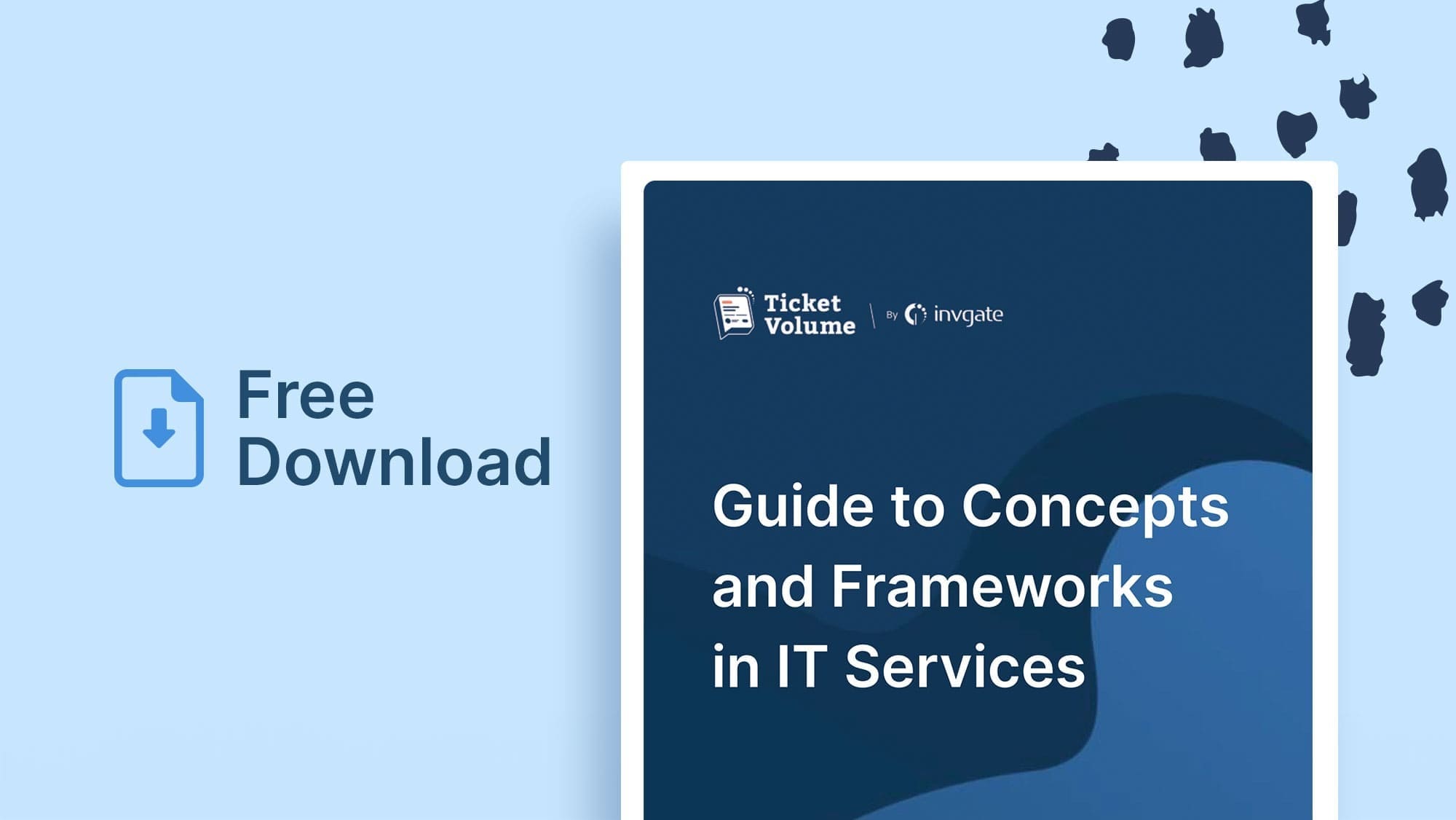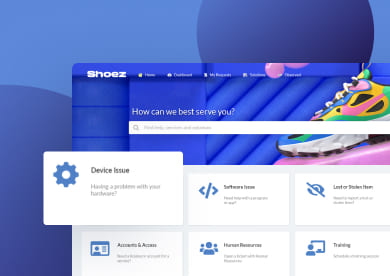An ITSM maturity model is a practical framework for measuring where your Service Management stands across people, processes, technology, and governance, then turning that baseline into a prioritized improvement plan. Most models describe five levels — from ad hoc to optimized — with clear characteristics and outcomes at each stage.
Use the model to align IT to business goals, set measurable targets, and create a repeatable cadence for ongoing improvement. This guide explains the levels, how to assess your current state, how to map capabilities to ITIL 4 practices, and actionable steps to get started.

What is an ITSM maturity model
An ITSM maturity model is a structured framework that helps organizations evaluate how effectively they deliver IT services and manage processes. It looks at four key dimensions — people, processes, technology, and governance — to assess how consistent, measurable, and business-aligned their IT operations are.
The model acts as both a diagnostic and a roadmap. It shows where Service Management stands today, identifies capability gaps, and outlines clear steps to progress toward higher performance by applying ITSM best practices. By applying it, IT leaders can move from reactive firefighting to proactive, data-driven service delivery.
Beyond assessment, maturity models also help standardize expectations across departments, set measurable improvement targets, and connect IT’s efforts with broader business outcomes. When used regularly, they create a feedback loop that drives continual improvement and long-term operational excellence.

What are the maturity levels
While terminology can vary, most ITSM maturity models follow five stages that represent increasing levels of consistency, control, and optimization.
-
Level 1 — Initial (ad hoc practices).
Work is mostly reactive, relying on individual effort rather than defined processes. Documentation is minimal, performance is unpredictable, and service quality depends on specific people rather than the system as a whole. -
Level 2 — Repeatable (basic process awareness).
Some key processes exist and are carried out in similar ways across teams, though not always documented. Teams start recognizing the value of standardization, and recurring issues are handled with some consistency. -
Level 3 — Defined (standardized and documented).
Processes are well-documented, roles and responsibilities are assigned, and workflows are enforced through tools. Knowledge sharing improves, training is formalized, and IT begins to integrate more closely with other departments. -
Level 4 — Managed (measured and data-driven).
Performance metrics are tracked and used to guide decisions. ITSM practices are consistently followed, governance is strong, and management uses KPIs to evaluate outcomes and drive targeted improvements. -
Level 5 — Optimized (continuous improvement culture).
The organization proactively improves based on trend analysis and feedback. Automation and predictive analytics are integrated into processes, and IT continuously adapts to support evolving business goals.
How to assess your maturity
A good ITSM maturity assessment gives you a factual view of how Service Management actually operates (what’s standardized, what depends on individuals, and where improvement will have the most impact). You don’t need a complex audit; a structured, evidence-based approach is enough to get reliable insight.
-
Define the scope.
Start by deciding what you’ll assess. Many organizations focus on a few core ITIL 4 practices first — such as Incident Management, Change Enablement, Service Request Management, and Problem Management — before expanding to others like Configuration or Service Level Management. Limiting the initial scope keeps the assessment manageable and helps you produce usable results. -
Gather a factual baseline.
Collect both quantitative and qualitative data. Quantitative inputs include KPIs (like incident resolution time, change success rate, or SLA compliance). Qualitative insights come from interviews or surveys that reveal how people perceive the process and where it breaks down. Together, these give you a balanced view of performance and behavior. -
Review each practice against maturity indicators.
For each practice in scope, evaluate four key dimensions:-
Process: Is there a documented procedure everyone follows?
-
People: Are roles and responsibilities clearly defined?
-
Technology: Does the toolset support or automate the process effectively?
-
Governance: Are results measured, reviewed, and improved over time?
Rate each area on a simple 1–5 scale that reflects the maturity levels (from ad hoc to optimized). The goal isn’t to get a perfect score—it’s to identify where structure, accountability, or automation are missing.
-
-
Analyze strengths and gaps.
Look for practices that are consistent and predictable versus those that rely on individual effort. Gaps often appear where documentation, metrics, or ownership are unclear. For example, a team may handle incidents efficiently but lack a defined change review process or a functioning CMDB. -
Prioritize improvements.
Once gaps are mapped, separate them into:-
Quick wins that can be addressed within weeks (e.g., updating ticket categories or standardizing escalation rules).
-
Structural improvements that require longer-term planning (e.g., automating approvals, implementing new integrations, or redefining SLAs).
Assign owners and realistic timelines to both.
-
-
Build a short-term improvement plan.
Use your findings to create a 90-day roadmap. The goal is to deliver visible progress fast—showing leadership that the model leads to action—while laying the groundwork for longer initiatives. Include metrics to measure improvement at the next assessment.
How often should you re-evaluate your ITSM maturity?
The right cadence depends on how fast your organization changes, but regular reassessment is key to maintaining momentum.
-
Every 6 to 12 months works for most organizations once processes stabilize.
-
Quarterly reviews make sense during early stages or after major system changes.
-
Event-driven reviews should happen when something significant occurs, such as a merger, reorganization, or a surge in incident volume.
Re-evaluating on a defined cycle helps confirm improvements, refresh priorities, and keep Service Management aligned with business needs.
Mapping maturity to ITIL 4 practices
Once you’ve scored your current state, the next step is connecting maturity levels with specific ITIL practices. This helps you translate abstract scores into actionable improvements. Below are examples of how advancing each key practice typically moves your organization from reactive to optimized operations.
-
Incident Management:
Early stages focus on recording incidents consistently and defining priority levels. As maturity grows, automated categorization, self-service portals, and clear escalation paths reduce manual work. At higher levels, trend analysis and predictive alerts help prevent incidents before they affect users. -
Change Enablement:
Initial maturity means changes are tracked but not standardized. Defined stages bring templates, approval workflows, and a change calendar. At advanced levels, risk-based automation and post-implementation reviews are common, while Change Management KPIs like change success rate guide optimization. -
Problem Management:
Low maturity typically addresses problems informally after recurring incidents. A defined practice introduces root-cause analysis templates and a known error database. Mature organizations use proactive analysis and share learnings across teams, feeding continual improvement efforts. -
Service catalog and Request Management:
Starting points usually involve unstructured requests via email or chat. As maturity develops, a centralized service catalog lists standard offerings with SLAs and automated fulfillment workflows. At optimized levels, request patterns inform new service design or cost management decisions. -
Knowledge Management:
In the early stages, information is scattered across channels. Once the practice is defined, teams document common solutions and link articles to incidents. Mature organizations measure article helpfulness and use AI-based recommendations to keep knowledge updated and accessible. -
Measurement and reporting:
Lower maturity often relies on anecdotal evidence or basic ticket counts. Defined levels establish dashboards, KPIs, and trend reports. At advanced stages, metrics are used for forecasting and correlating service performance with business outcomes.
KPIs and benchmarks by level
You can track progress through ITSM metrics and KPIs, quantifiable indicators that evolve with each maturity stage. The table below illustrates how capability, baseline, and target expectations shift over time.
| Capability | KPI |
Typical baseline
|
Target by level
|
| Incident Management | Mean time to detect (MTTD), Mean time to resolve (MTTR) | Reactive detection, no tracking | Level 3: consistent measurement; Level 4: automated alerts; Level 5: predictive prevention |
| Change Enablement | Change success rate | <70% success, no post-review | Level 3: >85% success, CAB review; Level 4–5: automated risk scoring, >95% success |
| Problem Management | Recurring incident reduction | Recurring issues not logged | Level 3: root cause documented; Level 4–5: proactive trend elimination |
| Service Request Management | First contact resolution (FCR), backlog size | High backlog, low self-service usage | Level 3: 60–70% FCR; Level 4: >80% FCR with automation |
| Knowledge Management | Article helpfulness rating, ticket deflection. | Sparse documentation | Level 3: basic KB linked to tickets; Level 4–5: continuous updates, >85% helpfulness |
| Service Level Management | SLA compliance, CSAT | <80% SLA, inconsistent surveys | Level 3: >90% SLA compliance; Level 4–5: >95% with trend-based actions |
Targets should be adjusted for your organization’s context, service complexity, and available automation. The goal isn’t to compare against generic industry numbers, but to improve your ITIL processes consistently across review cycles.
These indicators let you visualize progress over time, compare practices consistently, and guide investment decisions for tooling, automation, or training.
From baseline to roadmap
Once the assessment results are in, it’s time to turn findings into an actionable improvement plan. The most effective way is to prioritize initiatives by impact and effort, then organize them into 90-day delivery waves.
-
Sort initiatives by impact and effort
Use a simple matrix to classify opportunities:-
High impact / low effort → quick wins to show visible improvement.
-
High impact / high effort → structural initiatives requiring sponsorship.
-
Low impact / low effort → efficiency tweaks.
-
Low impact / high effort → usually deprioritized.
-
-
Plan in 90-day waves
Each wave should have clear objectives, assigned owners, and success metrics. For instance, Wave 1 could focus on process documentation and SLA review; Wave 2 on automation and reporting; Wave 3 on proactive analysis and governance. -
Define governance and ownership
Assign a process owner per ITIL practice and a program owner to oversee coordination. Hold brief monthly check-ins and a quarterly review to evaluate results and refresh priorities. -
Set a cadence for reporting
Align reporting frequency with your reassessment rhythm (quarterly or biannual). Use dashboards to share progress, and make updates part of regular management reviews rather than standalone reports.
Is an external benchmark useful besides self-assessment?
External benchmarking can provide a valuable perspective when used at the right time.
-
When it helps:
- After completing an internal cycle, I wanted to validate the results.
- When planning large-scale changes, such as ITSM tool replacement or certification efforts (e.g., ISO/IEC 20000).
- To gain executive buy-in by comparing your scores against industry peers.
-
What to expect:
Third-party audits or consulting assessments typically review your maturity against standard ITSM frameworks and highlight where you differ from the market average. They can also confirm progress objectively and identify blind spots missed internally.
An external review shouldn’t replace your self-assessment — it should complement it by adding perspective, validation, and external credibility.
Common pitfalls
Many ITSM improvement efforts lose momentum not because of poor intent, but due to avoidable missteps. Recognizing them early helps keep your maturity journey realistic and sustainable.
-
Tracking metrics with no ownership - KPIs are only useful when someone is accountable for interpreting and acting on them. Assigning clear owners for each metric ensures follow-up and continuous improvement instead of passive reporting.
-
Running a knowledge base without governance - Without regular reviews and ownership, knowledge articles quickly become outdated or redundant. Define publishing standards, review cycles, and feedback mechanisms to keep content reliable.
-
Publishing a service catalog that no one uses - A catalog that’s too technical or poorly organized discourages adoption. Structure it from the user’s perspective, use plain language, and make sure each entry links to a clear request or support workflow.
-
Launching initiatives without executive sponsorship - Without leadership backing, ITSM improvements risk losing funding or visibility. Executive sponsors help connect IT outcomes to business goals and maintain long-term focus.
-
Expanding scope too quickly - Trying to mature every process at once dilutes effort. Start small, show results, and build credibility before broadening scope to other practices.
Finally, we highly recommend buying a tool before maturing your processes. Technology can’t compensate for unclear workflows. Automating a weak process only spreads inconsistency faster, so focus on defining and stabilizing key practices before tool upgrades or replacements.
Once your workflows are defined and measurable, a platform like InvGate Service Management can help you take the next step with automation, reporting, and collaboration features that reinforce good practices instead of replacing them.
Start improving your Service Management capabilities today: get your 30-day free trial and see how the right tool can turn structure into measurable results.















